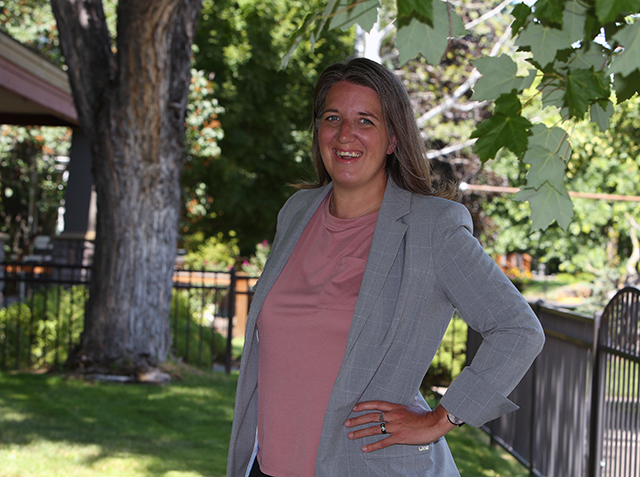‘Exorcist’ turns heads to the stage
Published 5:00 am Sunday, June 24, 2012
LOS ANGELES — A desecrated statue of the Virgin Mary. A forebodingly steep outdoor staircase. A girl whose head twists all the way around her body and emits something thick, green and unpleasant from her mouth.
These are among the haunting visual elements of “The Exorcist,” William Friedkin’s enduring (if nightmare-inducing) 1973 movie about a child overtaken by a defiantly evil spirit. And none of them will appear in the stage play of “The Exorcist,” which has its premiere at the Geffen Playhouse here next month.
Trending
“The bad way to do this is to try to remake the movie,” said John Pielmeier, who adapted “The Exorcist” for the stage from the 1971 William Peter Blatty novel that also spawned the film. “This can’t be about trying to find a way to turn some kid’s head around onstage.”
Artistic struggle
Behind the scenes of this battle for a girl’s soul is a smaller-scale struggle, artistic rather than theological. Can an all-star play that shares its DNA with a hit horror movie capitalize on this connection while shaking off the burdens of its cinematic predecessor? In doing so, can it help establish a Los Angeles theater as a significant source of new stage work? Will it even be scary?
On this last question, at least, Pielmeier, speaking at the Geffen Playhouse offices recently, admitted his agnosticism: “That’s something we’re just not going to know until it’s on its feet, in front of an audience.”
Directed by John Doyle, the Geffen’s production of “The Exorcist” will begin previews July 3 with a cast that includes Brooke Shields as the tormented actress and mother Chris MacNeil (played in the movie by Ellen Burstyn) and Richard Chamberlain as the demon-banishing priest, Merrin (Max von Sydow in the movie).
Of course, this wouldn’t be an “Exorcist” story without a little weirdness. Pielmeier, who dealt with issues of belief and organized religion in his play “Agnes of God” (and its 1985 film adaptation), said he was approached by “some people” to write a play based on Blatty’s “Exorcist” novel.
Trending
After rereading the book and coming to see it as “a story of people in crises of faith,” Pielmeier said he learned the people who had approached him did not actually have the theatrical rights to the book. (He declined to go into further detail about this situation.)
Pielmeier then met with Blatty, who, he said, granted him permission to proceed. The play, which Pielmeier describes as “a piece of faith study,” still focuses on Chris MacNeil and her possessed daughter, Regan; Merrin, the elder cleric; and Damien Karras, a younger priest whose mother has recently died and is unsure if he will remain in the clergy.
Pielmeier also said he had “extrapolated on the book” with Blatty’s permission, like establishing that Chris is starring in a “fluffy comedy” at the time of Regan’s possession. “It creates a sort of irony,” Pielmeier said, “the fact that this darkness comes into the life of this woman who is known for being the Doris Day of 2012.”
Blatty, who is pursuing a lawsuit in church court against Georgetown University, his alma mater, to remove its designation as a Roman Catholic institution, declined to answer questions sent by email. But he offered in an email that he was happy to have chosen Pielmeier to write the play, and that Pielmeier had “done a wonderful job of capturing the true essence of the novel, the mystery of faith.” Doyle, who has directed operas like “Madama Butterfly” and productions of Stephen Sondheim’s “Sweeney Todd” and “Company,” in which the actors also served as the orchestra, said in a telephone interview from London that he “inevitably jumped to conclusions” when he was offered the play, expecting spinning heads here, pea soup there.
Morality tale
But Doyle said he was pleasantly surprised to find that Pielmeier’s script asked more fundamental questions about good and evil. “Like any kind of morality tale,” he said, “does good win in the end? And what’s the cost of good winning in the end?”
Before a three-week London workshop of the play last year with a different cast Doyle and Pielmeier had already reached certain creative decisions: It would be performed by a small cast of about nine, who would remain onstage for the duration, and the character of the adolescent Regan would be performed by an adult actress (Emily Yetter in the Geffen production).
After the workshop, Doyle said, they decided to remove the intermission and perform “The Exorcist” in a single act. “If you’re going to make people tense in the theater,” he said, “you can’t let them out.”
Doyle said a central tenet of his “Exorcist” staging was to incorporate elements from the Roman Catholic Mass and other rituals of that faith. “I try to put it all into one place, as if it were happening around an altar, if you like,” he said.







